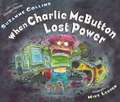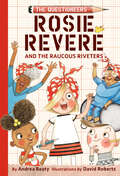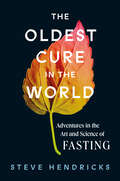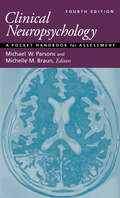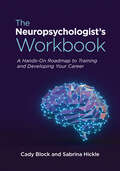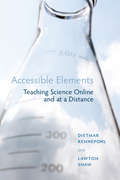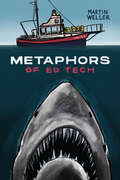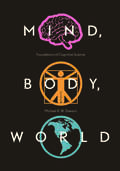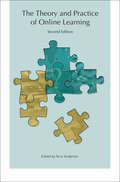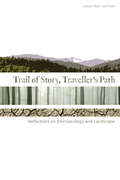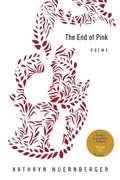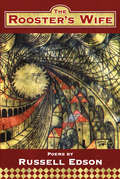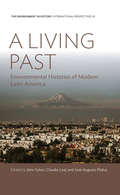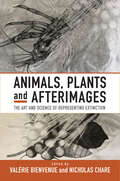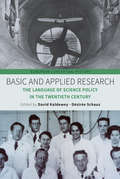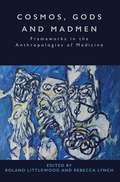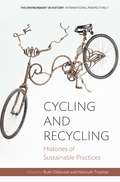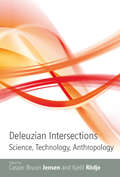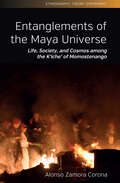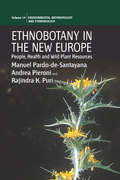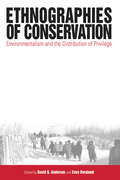- Table View
- List View
When Charlie McButton Lost Power
by Suzanne Collins Mike LesterAn electifying picture book from the author of The Hunger Games. Charlie McButton likes computer games so much, he never plays with anything else. When a thunderstorm knocks out the electricity, his tech empire comes tumbling down, and his whole world loses power. He needs batteries--FAST. But the only triple A's he can find are in his little sister's talking doll. Will he resort to desperate measures and cause his little sister to have a meltdown of her own? Or will be snap out of his computer craze long enough to realize he can have fun with her, even without batteries? Suzanne Collins, author of the bestselling Hunger Games trilogy, and award-winning illustrator Mike Lester team up for a hilarious and timely tale that will crack up young computer addicts and those who love them.
Rosie Revere and the Raucous Riveters: The Questioneers Book #1 (The Questioneers)
by Andrea BeatyFrom the #1 New York Times bestselling team Andrea Beaty and David Roberts—who created Ada Twist, Scientist and Iggy Peck, Architect—comes Rosie Revere and the Raucous Riveters, a spirited story full of adventure, friendship, and science—and first in the Questioneers chapter book series. Watch Rosie Revere in the Netflix television series Ada Twist, Scientist! “Plenty of affection, creativity, and raucous older ladies to make readers smile.” ―Kirkus Reviews “[A] positive portrayal of diverse kids engaging in various arts and sciences.” ―Booklist Rosie Revere is no stranger to flops and fails, kerfuffles and catastrophes. After all, engineering is all about perseverance! But this time, Rosie has a really important project to tackle—one that feels much bigger than herself. Rosie’s beloved Aunt Rose and her friends, the Raucous Riveters—a group of fun-loving gals who built airplanes during World War II—need help inventing something new. And Rosie is just the engineer for the job! After one flop . . . then another . . . and another . . . Rosie starts to lose hope. But thanks to some help from her fellow Questioneers Iggy Peck and Ada Twist, Rosie gets the job done. And, along with the Riveters, Rosie rediscovers the meaning of home. Rosie Revere and the Raucous Riveters is the first in a unique and exciting series of chapter books for children, parents, and teachers who want to make STEM (science, technology, engineering, and math) fun. Check out all the books in the Questioneers Series: The Questioneers Picture Book Series: Iggy Peck, Architect | Rosie Revere, Engineer | Ada Twist, Scientist | Sofia Valdez, Future Prez | Aaron Slater, Illustrator | Lila Greer, Teacher of the YearThe Questioneers Chapter Book Series: Rosie Revere and the Raucous Riveters | Ada Twist and the Perilous Pants | Iggy Peck and the Mysterious Mansion | Sofia Valdez and the Vanishing Vote | Ada Twist and the Disappearing Dogs | Aaron Slater and the Sneaky SnakeQuestioneers: The Why Files Series: Exploring Flight! | All About Plants! | The Science of Baking | Bug Bonanza! | Rockin’ Robots!Questioneers: Ada Twist, Scientist Series: Ghost Busted | Show Me the Bunny | Ada Twist, Scientist: Brainstorm Book | 5-Minute Ada Twist, Scientist StoriesThe Questioneers Big Project Book Series: Iggy Peck’s Big Project Book for Amazing Architects | Rosie Revere’s Big Project Book for Bold Engineers | Ada Twist’s Big Project Book for Stellar Scientists | Sofia Valdez’s Big Project Book for Awesome Activists | Aaron Slater’s Big Project Book for Astonishing Artists
The Oldest Cure in the World: Adventures in the Art and Science of Fasting
by Steve HendricksA journalist delves into the history, science, and practice of fasting, an ancient cure enjoying a dynamic resurgence. When should we eat, and when shouldn’t we? The answers to these simple questions are not what you might expect. As Steve Hendricks shows in The Oldest Cure in the World, stop eating long enough and you’ll set in motion cellular repairs that can slow aging and prevent and reverse diseases like diabetes and hypertension. Fasting has improved the lives of people with epilepsy, asthma, and arthritis, and has even protected patients from the worst of chemotherapy’s side effects. But for such an elegant and effective treatment, fasting has had a surprisingly long and fraught history. From the earliest days of humanity and the Greek fathers of medicine through Christianity’s “fasting saints” and a 19th-century doctor whose stupendous 40-day fast on a New York City stage inaugurated the modern era of therapeutic fasting, Hendricks takes readers on a rich and comprehensive tour. Threaded throughout are Hendricks’s own adventures in fasting, including a stay at a luxurious fasting clinic in Germany and in a more spartan one closer to home in Northern California. This is a playful, insightful, and persuasive exploration of our bodies and when we should—and should not—feed them.
Clinical Neuropsychology: A Pocket Handbook for Assessment
by Michael W. Parsons Michelle M. BraunFully revised and updated, this pocket handbook for clinical assessment covers a comprehensive range of neurological, neuropsychological, neuropsychiatric, and neurobehavioral syndromes and disorders. Now in its fourth edition, this ready reference helps the busy clinician or doctoral-level trainee select from among hundreds of tests and assessment techniques in clinical neuropsychology. It guides clinicians in developing tailored, hypothesis-driven approaches for assessing patients with a broad range of common neuropsychological syndromes and neurological disorders. This book is an invaluable diagnostic guide designed to fit into a lab coat pocket for accessible and immediate use. Major updates to the new edition include: A revamped approach to contemporary neuropsychological assessment that incorporates cultural factors, mood, emotion and affect, medications, cognitive functioning and electrophysiology data, as well as emerging trends including tele-neuropsychology, positive neuropsychology, and consumer‑focused reports. New and expanded coverage of topics including updates on neurodegenerative disorders and mild cognitive impairment (MCI); lifestyle interventions to maximize cognitive functioning in MCI and dementia; chronic traumatic encephalopathy (CTE), autoimmune disorders, and motor disorders. An increased emphasis on neuropsychiatric syndromes. New topics include intellectual disabilities, the impact of marijuana and alcohol on cognitive functioning, anxiety disorders/PTSD, and an expanded focus on mood disorders. Updated online resources to support teaching and learning through neuroimaging figures and video demonstrations of exam techniques, and extended reading lists that have been expanded and more fully integrated into assessment chapters.
The Neuropsychologist's Workbook: A Hands-On Roadmap to Training and Developing Your Career
by Cady Block Sabrina Hickle PhDUnlock your career in neuropsychology with this practical workbook for aspiring professionals. This is a hands-on, practical workbook to accompany The Neuropsychologist&’s Roadmap: A Training and Career Guide. This workbook covers the training journey in neuropsychology, as well as its foundational and functional competencies. The workbook allows readers to access additional information, benefit from even more advice, and engage interactively with activities such as self-assessments, checklists, free writing exercises, and more. These activities help the reader reflect on and articulate personal values and goals to help guide them through their own journey. Using this workbook will help readers recognize their own strengths and weaknesses, so they know what they need to work on when considering the factors impacting entry into (and success within) graduate school, internship, fellowship, and the first job. This is a valuable resource for anyone considering a career in neuropsychology or those who train, supervisor, or mentor students in this field.
Metaphors of Ed Tech (Issues in Distance Education)
by Martin WellerThe criticisms leveled at online education during the Covid-19 pandemic revealed not only a lack of understanding about how educational technology can be deployed effectively, but a lack of imagination. In this refreshing and insightful volume, Martin Weller provides new ways of thinking about educational technology through a wide range of metaphors. By using metaphors as a mental model, Weller enables educators to move beyond pragmatic concerns into more imaginative and playful uses of technology and to critically examine the appropriate implementation and adoption of ed tech.
Mind, Body, World: Foundations of Cognitive Science
by Michael R. DawsonCognitive science arose in the 1950s when it became apparent that a number of disciplines, including psychology, computer science, linguistics, and philosophy, were fragmenting. Perhaps owing to the field’s immediate origins in cybernetics, as well as to the foundational assumption that cognition is information processing, cognitive science initially seemed more unified than psychology. However, as a result of differing interpretations of the foundational assumption and dramatically divergent views of the meaning of the term information processing, three separate schools emerged: classical cognitive science, connectionist cognitive science, and embodied cognitive science. Examples, cases, and research findings taken from the wide range of phenomena studied by cognitive scientists effectively explain and explore the relationship among the three perspectives. Intended to introduce both graduate and senior undergraduate students to the foundations of cognitive science, Mind, Body, World addresses a number of questions currently being asked by those practicing in the field: What are the core assumptions of the three different schools? What are the relationships between these different sets of core assumptions? Is there only one cognitive science, or are there many different cognitive sciences? Giving the schools equal treatment and displaying a broad and deep understanding of the field, Dawson highlights the fundamental tensions and lines of fragmentation that exist among the schools and provides a refreshing and unifying framework for students of cognitive science.
The Theory and Practice of Online Learning
by Terry AndersonIn this important collection of essays by practitioners and scholars that has been downloaded nearly half a million times is an overview of some of the most pressing issues in online education. By addressing transformations arising from educational technology advances and the new business conditions and modes of delivery of education, the contributors to The Theory and Practice of Online Learning provide insights into this complex, diverse, and rapidly evolving field.
Trail of Story, Traveller’s Path
by Leslie Main JohnsonTrail of Story examines the meaning of landscape, drawn from Leslie Main Johnson's rich experience with diverse environments and peoples, including the Gitksan and Witsuwit'en of northwestern British Columbia, the Kaska Dene of the southern Yukon, and the Gwich'in of the Mackenzie Delta. With passion and conviction, Johnson maintains that our response to our environment shapes our culture, determines our lifestyle, defines our identity, and sets the tone for our relationships and economies. With photos, she documents the landscape and contrasts the ecological relationships with land of First Nations peoples to those of non-indigenous scientists. The result is an absorbing study of local knowledge of place and a broad exploration of the meaning of landscape.
The End of Pink (American Poets Continuum)
by Kathryn NuernbergerWinner of the 2015 James Laughlin Award, Kathryn Nuernberger's The End of Pink is populated by strange characters—Bat Boy, automatons, taxidermied mermaids, snake oil salesmen, and Benjamin Franklin—all from the annals of science and pseudoscience. Equal parts fact and folklore, these poems look to the marvelous and the weird for a way to understand childbirth, parenthood, sickness, death, and-of course—joy.
The Rooster's Wife (American Poets Continuum #Vol. 90)
by Russell EdsonFor the past 40 years, Russell Edson has been producing a body of work unique in its perspective and singular in its approach. He is, arguably, America’s most distinguished writer of prose poems. Here are contorted Darwinian narratives of apes and monkeys exhibiting absurdly human behavior, along with his usual menagerie of elephants, horses, chickens, roosters, dogs, mermaids and mice. Along with his trademark humor, The Rooster’s Wife finds Edson contemplating age, mortality and immortality as well.Of Memory and DistanceIt’s a scientific fact that anyone entering the distance will grow smaller as he proceeds. Eventually becoming so small he might only be found with a microscope, if indeed he is found at all. But there is a vanishing point, where anyone having entered the distance must disappear entirely without hope of his ever returning, leaving only the memory of his ever having been. But then there is fiction, so that one can never really be sure if one is remembering someone who vanished into the distance, or simply who had been made of paper and ink . . .Russell Edson has been called a surrealist comic genius, a magician of metaphor and imagination. He is all of these, and a philosophical poet whose zany expeditions into the twisted labyrinths of logic resemble Lewis Carroll’s adventures through the wonderlands of paradox and illusion. Perhaps that is why even people who do not read significant amounts of contemporary poetry can immediately appreciate the playful accessibility of Russell Edson’s writing. What he pulls out of the hat of the subconscious is always unpredictable, immediate and surprising.Russell Edson’s books include The Very Thing That Happens (1964); The Childhood of an Equestrian (1973); The Tunnel: Selected Poems (1994); and The House of Sara Loo (Rain Taxi Chapbook Series, 2002). He lives in Darien, Connecticut.
ARMIX sukaldean: Mugaritzen laguntzarekin
by Elhuyar Fundazioa ElhuyarHaurrentzako zientzia liburua
El arte de saber alimentarte: Desde la ciencia de la nutrición al arte de la alimentación
by Karmelo Bizkarra MaiztegiLa nutrición es una ciencia y un arte la buena alimentación. La buena alimentación va más allá de ingerir comestibles. Todo lo que se puede comer no siempre es alimento.La calidad del alimento, no la cantidad, es lo importante en el arte de bien aliment-arte.Mientras la cantidad de calorías señala un índice cuantitativo, la calidad, la forma y el color del alimento plasman un campo energético que nos nutre. Cuando nos alimentamos recogemos y transformamos la energía vital que el alimento ha recogido de la tierra, el agua, el aire y el sol y la humanizamos.Primero se habló de proteínas, grasas y carbohidratos; luego de vitaminas y minerales, actualmente se habla de antioxidantes; en un futuro próximo seremos conscientes de que la forma, el aroma y el color del alimento son tan importantes como sus componentes bioquímicos. Los médicos antiguos recomendaban antes que nada, como tratamiento, un cambio en la dieta. De hecho la palabra receta se usa tanto para indicar la elaboración de un plato cocinado, como los medicamentos que prescribe un médico en su consulta. El arte de bien alimentarte es el primer pilar de la Salud?Dr. Karmelo Bizkarra Maiztegi. Es Licenciado en Medicina por la Universidad de Bilbao, ahora universidad del País Vasco, en el año 1979. Director médico del Centro de Salud Vital Zuhaizpe en Arizaleta-Navarra. Se ha formado en medicina Psicosomática, en teoría Reichiana, terapia Bioenergética y en medicina Antroposófica. Especialista en Educación para la Salud, se dedica desde el año 1980 a buscar y desarrollar nuevas vías en el tratamiento físico y psicoemocional de la enfermedad, a partir de su formación inicial en Medicina Higienista.Su quehacer médico se desarrolla a través de un programa de integración de la salud física con la salud psicoemocional. La alimentación sana, el ayuno, el despertar de los sentidos, el contacto con la naturaleza, la terapia psicocorporal, la expresión emocional y las relaciones humanas trabajadas en dinámicas de grupo, son parte de su programa de salud.Ha colaborado en varias revistas especializadas y es autor de libros en la línea de una educación para la salud: La enfermedad, ¿Qué es y para qué sirve? (Obelisco, 1989), Alimentos para la salud (Zuhaizpe, 1991), Cuidarte para Curarte, la Vía de la Salud Natural (Dilema, 2005). Encrucijada Emocional. Miedo (ansiedad), tristeza (depresión), rabia (violencia), alegría (euforia)( DDB, 2005). El poder curativo del ayuno (DDB, 2007) Bizitzeko edo sendatzeko (en euskera) (Elkar, 1986).
Ética general de las profesiones
by Augusto Hortal AlonsoDentro de esta colección de textos universitarios de ética profesional el presente volumen se ocupa de los temas comunes a todas las profesiones. Tras una primera caracterización y contextualización del complejo y cambiante fenómeno profesional, se trata de dilucidar los principios fundamentales que ofrecen los criterios básicos para articular una ética de las actuaciones profesionales. Una mirada a las relaciones profesionales y a la trayectoria biográfica de los profesionales más o menos identificados con su profesión, completa el panorama.
A Living Past: Environmental Histories of Modern Latin America (Environment in History: International Perspectives #13)
by José Augusto Pádua John Soluri, Claudia LealThough still a relatively young field, the study of Latin American environmental history is blossoming, as the contributions to this definitive volume demonstrate. Bringing together thirteen leading experts on the region, A Living Past synthesizes a wide range of scholarship to offer new perspectives on environmental change in Latin America and the Spanish Caribbean since the nineteenth century. Each chapter provides insightful, up-to-date syntheses of current scholarship on critical countries and ecosystems (including Brazil, Mexico, the Caribbean, the tropical Andes, and tropical forests) and such cross-cutting themes as agriculture, conservation, mining, ranching, science, and urbanization. Together, these studies provide valuable historical contexts for making sense of contemporary environmental challenges facing the region.
Animals, Plants and Afterimages: The Art and Science of Representing Extinction
by Nicholas Chare Valérie BienvenueThe sixth mass extinction or Anthropocene extinction is one of the most pervasive issues of our time. Animals, Plants and Afterimages brings together leading scholars in the humanities and life sciences to explore how extinct species are represented in art and visual culture, with a special emphasis on museums. Engaging with celebrated cases of vanished species such as the quagga and the thylacine as well as less well-known examples of animals and plants, these essays explore how representations of recent and ancient extinctions help advance scientific understanding and speak to contemporary ecological and environmental concerns.
Basic and Applied Research: The Language of Science Policy in the Twentieth Century (European Conceptual History #4)
by David KaldeweyThe distinction between basic and applied research was central to twentieth-century science and policymaking, and if this framework has been contested in recent years, it nonetheless remains ubiquitous in both scientific and public discourse. Employing a transnational, diachronic perspective informed by historical semantics, this volume traces the conceptual history of the basic–applied distinction from the nineteenth century to today, taking stock of European developments alongside comparative case studies from the United States and China. It shows how an older dichotomy of pure and applied science was reconceived in response to rapid scientific progress and then further transformed by the geopolitical circumstances of the postwar era.
Cosmos, Gods and Madmen: Frameworks in the Anthropologies of Medicine
by Lynch LittlewoodThe social anthropology of sickness and health has always been concerned with religious cosmologies: how societies make sense of such issues as prediction and control of misfortune and fate; the malevolence of others; the benevolence (or otherwise) of the mystical world; local understanding and explanations of the natural and ultra-human worlds. This volume presents differing categorizations and conflicts that occur as people seek to make sense of suffering and their experiences. Cosmologies, whether incorporating the divine or as purely secular, lead us to interpret human action and the human constitution, its ills and its healing and, in particular, ways which determine and limit our very possibilities.
Cycling and Recycling: Histories of Sustainable Practices (Environment in History: International Perspectives #7)
by Ruth Oldenziel Helmuth TrischlerTechnology has long been an essential consideration in public discussions of the environment, with the focus overwhelmingly on creating new tools and techniques. In more recent years, however, activists, researchers, and policymakers have increasingly turned to mobilizing older technologies in their pursuit of sustainability. In fascinating case studies ranging from the Early Modern secondhand trade to utopian visions of human-powered vehicles, the contributions gathered here explore the historical fortunes of two such technologies—bicycling and waste recycling—tracing their development over time and providing valuable context for the policy successes and failures of today.
Deleuzian Intersections
by Casper Bruun Jensen Kjetil RodjeScience and technology studies, cultural anthropology and cultural studies deal with the complex relations between material, symbolic, technical and political practices. In a Deleuzian approach these relations are seen as produced in heterogeneous assemblages, moving across distinctions such as the human and non-human or the material and ideal. This volume outlines a Deleuzian approach to analyzing science, culture and politics.
Entanglements of the Maya Universe: Life, Society, and Cosmos among the K'iche' of Momostenango (Ethnography, Theory, Experiment)
by Alonso Rodrigo Zamora CoronaCosmology or cosmological ideas are often sought to solve problems in our daily lives. This book aims to rethink the topic of cosmology in anthropology through an ethnographic description of the many entanglements of cosmological ideas and the personal and political lives of individuals within the K’ich’e Maya community of Momostenango, Guatemala. It addresses the question of why they turn to cosmology in an everyday context and how ‘efficient’ it is. It also shows the way Indigenous cosmological ideas are echoed by contemporary philosophical and scientific conceptions.
Ethnobotany In The New Europe: People, Health and Wild Plant Resources (Environmental Anthropology and Ethnobiology #14)
by Andrea Pieroni Manuel Pardo-de-Santayana Rajindra K. PuriThe study of European wild food plants and herbal medicines is an old discipline that has been invigorated by a new generation of researchers pursuing ethnobotanical studies in fresh contexts. Modern botanical and medical science itself was built on studies of Medieval Europeans' use of food plants and medicinal herbs. In spite of monumental changes introduced in the Age of Discovery and Mercantile Capitalism, some communities, often of immigrants in foreign lands, continue to hold on to old recipes and traditions, while others have adopted and enculturated exotic plants and remedies into their diets and pharmacopoeia in new and creative ways. Now in the 21st century, in the age of the European Union and Globalization, European folk botany is once again dynamically responding to changing cultural, economic, and political contexts. The authors and studies presented in this book reflect work being conducted across Europe's many regions. They tell the story of the on-going evolution of human-plant relations in one of the most bioculturally dynamic places on the planet, and explore new approaches that link the re-evaluation of plant-based cultural heritage with the conservation and use of biocultural diversity.
Ethnographies Of Conservation
by David G. AndersonAnthropologists know that conservation often disempowers already under-privileged groups, and that it also fails to protect environments. Through a series of ethnographic studies, this book argues that the real problem is not the disappearance of "pristine nature" or even the land-use practices of uneducated people. Rather, what we know about culturally determined patterns of consumption, production and unequal distribution, suggests that critical attention would be better turned on discourses of "primitiveness" and "pristine nature" so prevalent within conservation ideology, and on the historically formed power and exchange relationships that they help perpetuate.
